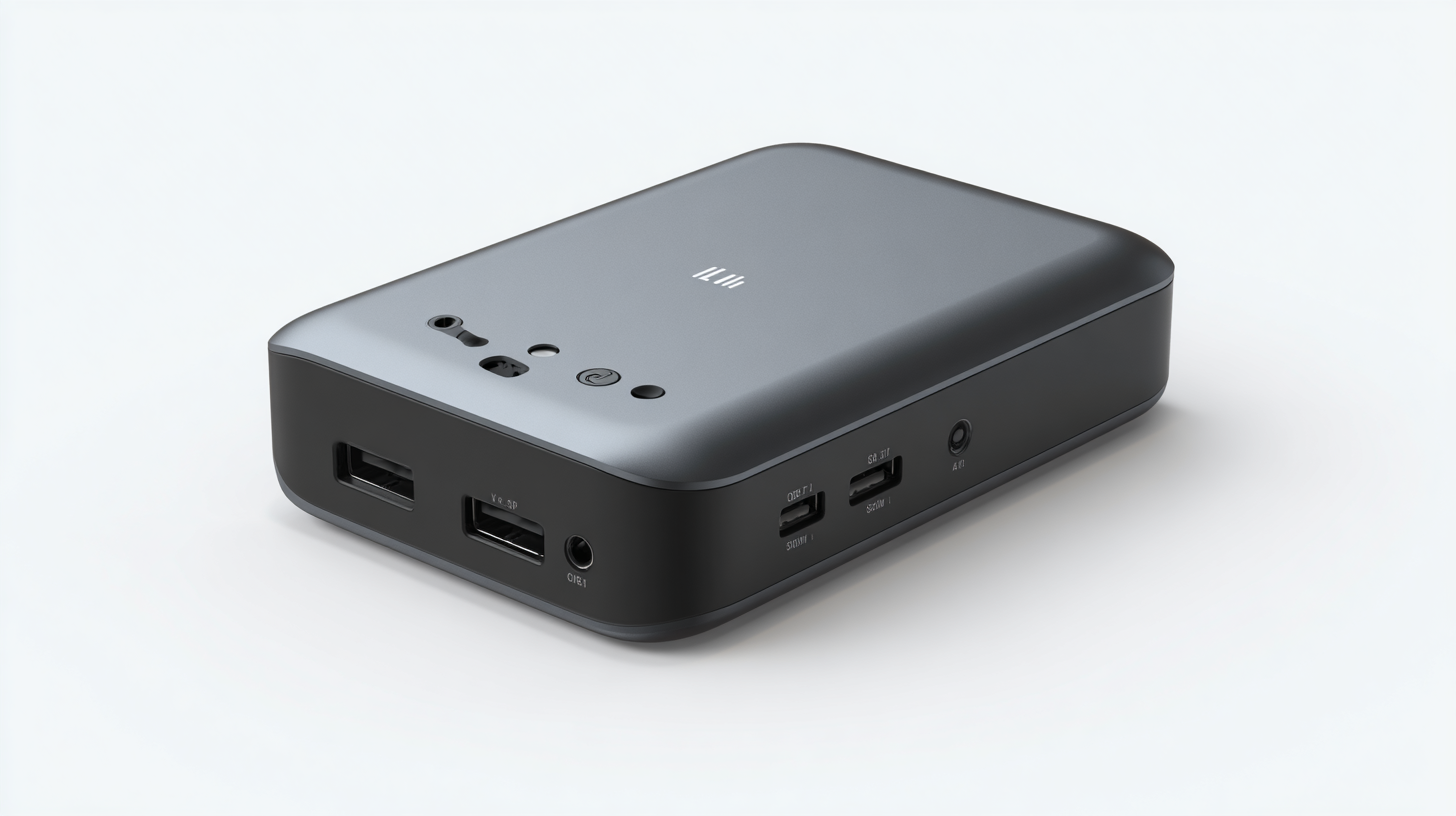In today's fast-paced digital landscape, the demand for reliable and efficient connectivity has led to a significant rise in the popularity of portable routers. These compact and versatile devices cater to a wide range of users, from frequent travelers who need consistent internet access on the go to remote workers seeking dependable connections in unconventional settings. Understanding industry standards for portable routers is essential for both consumers and manufacturers alike, as it affects everything from performance and compatibility to safety and compliance. This blog will delve into the critical import and export certifications that influence the best portable routers available in the market today, while highlighting the top types that meet these rigorous industry standards. By exploring these aspects, we aim to equip readers with the knowledge necessary to make informed choices and ultimately enhance their mobile connectivity experience.

When searching for the best portable router on today's market, three key features stand out: speed, range, and technology. Speed is crucial for anyone who relies on fast internet connectivity for work or streaming. Look for routers that support advanced wireless standards like Wi-Fi 6, which can deliver significantly higher speeds and better performance in environments with multiple connected devices. A router that offers a high throughput ensures that you can stream, download, or video conference without interruptions, even while on the go.
Range is another vital characteristic to consider. A good portable router should provide robust coverage, allowing you to connect seamlessly from various locations, whether you're indoors or outdoors. Features such as multiple antennas or beamforming technology can enhance the range and provide strong connections even at greater distances. By paying attention to these specifications, you can maximize your connectivity experience.
Finally, the technology behind the router plays a significant role in its overall performance. Features like dual-band or tri-band operation allow devices to connect more efficiently by distributing traffic across different frequencies. Additionally, consider routers with built-in security protocols, such as WPA3, to ensure your data remains safe when using public networks. Emphasizing these features will guide you towards a superior portable router that meets your connectivity needs.
When it comes to selecting the best portable router in today’s market, consumer reviews and ratings play a pivotal role. Many travelers look for devices that offer reliable connectivity without the bulk, ensuring they can work or stream seamlessly while on the go. The recent reviews of popular travel routers highlight essential features such as compact design, versatility in connectivity options, and ease of use, which are crucial for users who prioritize mobility. Analyzing consumer feedback reveals that factors like battery life and ease of setup are often at the forefront of users' decision-making.
Additionally, the analysis of budget routers indicates a growing need for affordability without compromising on performance. Many consumers are drawn to options that allow them to enjoy high-speed internet access during their travels, making comparisons of specifications, performance, and reliability critical. In 2025, top-rated models have been designed not only to be lightweight and portable but also to deliver excellent performance. This comparative approach ensures that users can make informed decisions based on experiences shared by fellow consumers, leading them to the ideal portable router that meets their specific travel needs.
When considering a portable router, understanding the wireless standards—specifically 802.11ac and 802.11ax—is crucial for making an informed choice. The 802.11ac standard, also known as Wi-Fi 5, has been a popular choice for several years, offering significant improvements over its predecessor, 802.11n. With higher speeds and the ability to handle multiple devices simultaneously, it has been sufficient for most home and small office setups. However, as our demand for faster and more reliable internet connectivity increases, 802.11ax, or Wi-Fi 6, is quickly becoming the standard of choice for modern portable routers.

802.11ax enhances wireless performance by using advanced technologies like Orthogonal Frequency Division Multiple Access (OFDMA) and improved beamforming. These innovations allow for greater efficiency and reduced latency, especially in environments with numerous connected devices. Wi-Fi 6 provides up to 40% more capacity than Wi-Fi 5, making it ideal for households with smart devices or environments like cafes and airports where many users are vying for bandwidth. As you shop for a portable router, prioritizing models that support 802.11ax ensures you’re prepared for the future of wireless connectivity.
 When it comes to choosing a portable router for travel, battery life and portability are two critical factors that can greatly enhance your experience. Nothing is more frustrating than running out of battery while trying to stay connected during a long journey. Look for models that offer at least 10-12 hours of battery life to ensure you can access the internet throughout your travels without needing constant recharging.
Compact designs that fit easily into your bag can also make a significant difference, enabling you to travel light without sacrificing connectivity.
When it comes to choosing a portable router for travel, battery life and portability are two critical factors that can greatly enhance your experience. Nothing is more frustrating than running out of battery while trying to stay connected during a long journey. Look for models that offer at least 10-12 hours of battery life to ensure you can access the internet throughout your travels without needing constant recharging.
Compact designs that fit easily into your bag can also make a significant difference, enabling you to travel light without sacrificing connectivity.
Tips: Consider routers that boast fast charging capabilities for emergency situations. Additionally, a router with power bank functionality can double as a charger for your other devices, further maximizing your travel efficiency. Don't forget to read user reviews and ensure that the router you choose has a reliable performance track record.
Moreover, ensure the router supports multiple connections and has a robust signal range. This is particularly important if you're traveling with companions who also need internet access. A good portable router should easily handle multiple devices without compromising performance, allowing you to share your connection seamlessly.
When utilizing portable routers, ensuring secure internet access becomes paramount, particularly for users on the go. According to a report by the Global Cybersecurity Index, about 30% of mobile internet users have experienced data breaches while using public Wi-Fi. This alarming statistic highlights the need for robust security protocols in portable routers, which can protect sensitive information from malicious attacks.
Most portable routers now come equipped with advanced security features such as WPA3 encryption, which provides improved protection against unauthorized access. Industry studies indicate that WPA3 significantly reduces the risk of brute-force attacks and enhances security for devices connecting to the router. Additionally, implementing a Virtual Private Network (VPN) feature in portable routers is becoming increasingly common, offering users an encrypted tunnel for their internet traffic, ultimately ensuring privacy and security while accessing the web.
Moreover, with the rise of IoT devices, the demand for portable routers with secure network segmentation is on the rise. According to a report from the International Data Corporation (IDC), 64% of users expressed concern about their router's security settings, which underscores the importance of selecting a device that allows for customizable security options. As users prioritize safety when accessing the internet on the go, understanding these security protocols becomes essential for making informed decisions in choosing the best portable router.


